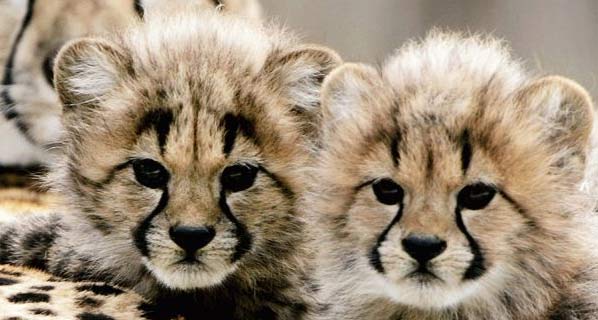Cheetahs (Acinonyx jubatus) are the fastest land animals, running up to 120 km/h in short bursts to bring down prey. They are also the last surviving species of the genus Acinonyx, the rest of the genus was said to have died in the late Pleistocene. This includes at least 4 other species in the genus and other Acinonyx jubatus subspecies. It is likely that the same extinction event caused a bottleneck effect. This meant that only a small number of the original population survived, leading to a huge lost in the genetic variability. Things only got worse for the cheetahs, genetically speaking. As surviving population multiplied, it led to inbreeding within the population. The inbreeding process caused severe impacts on the subsequent generations of cheetahs through high infant mortality rates . As such the population becomes smaller and smaller, even without taking into account external negative forces such as habitat destruction. This, in turn, made it more likely for inbreeding to occur as the cheetahs become more interrelated.
 |
| Cheetahs suffer from high infant mortality rates, making it difficult for population to expand |
So then what has this have to do about changing spots and grafting? It is precisely because the above mention situation, individuals of species have become so genetically similar, and are able to accept skin grafts from each other. An experiment was conducted by O'Brien in 1983, where 7 unrelated cheetah pairs were given each others' skin as grafts, 6 were non-related and 1 was a pair of siblings. The results was that none of the grafts were rapidly rejected by its host, with majority of the grafts, 11 out of 14, being accepted without any rejection of sorts.
Further studies by O'Brien inquires about how similar are the cheetahs genetically and the results showed 0 polymorphism in the genes and a slight degree of polymorphism in the proteins. Though there are other animals that survive with low polymorphism, such as the polar bear, such low levels of polymorphism are not naturally found in anywhere else in the feline family.
Being so similar to each other does not give a species an advantage, in fact, it makes them more vulnerable to single selection pressure such as disease, that might cause its extinction, as the population does not have required variation to adapt.
Even as the idiom sheds a negative light on leopards not being able to change their spots- perhaps it is better not being able to after all.
References
O'Brien, S. (1994).
The Cheetah's Conservation Controversy. Conservation Biology,
8(4), 1153-1155. doi:10.1046/j.1523-1739.1994.08041153.x
Last accessed: 13 Sept 2015
O'Brien, S., Roelke,
M., Marker, L., Newman, A., Winkler, C., & Meltzer, D. et al.
(1985). Genetic basis for species vulnerability in the cheetah.
Science, 227(4693), 1428-1434.
doi:10.1126/science.2983425
Last accessed: 13 Sept 2015
O'Brien, S., Wildt,
D., Goldman, D., Merril, C., & Bush, M. (1983). The Cheetah Is
Depauperate in Genetic Variation. Science, 221(4609),
459-462. doi:10.1126/science.221.4609.459
Retrieved from:
Last accessed: 13 Sept 2015
The Zookeeper (2013) Cheetah-cubs
Retrieved from: http://www.babyanimalzoo.com/best-of-the-zoos-recent-batch/cheetah-cubs
Last accessed: 13 Sept 2015

No comments:
Post a Comment